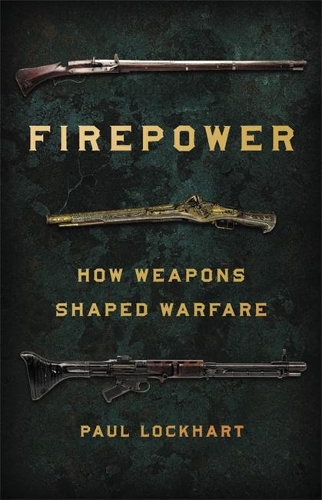
Firepower: How Weapons Shaped Warfare
(Hardback)
Publishing Details
Firepower: How Weapons Shaped Warfare
By (Author) Paul Lockhart
Illustrated by Paul Lockhart
Basic Books
Basic Books
22nd February 2022
11th November 2021
United States
Classifications
General
Non Fiction
Weapons and equipment
European history
History of the Americas
355.820903
Physical Properties
Hardback
640
Width 154mm, Height 238mm, Spine 50mm
900g
Description
The history of warfare cannot be fully understood without considering the technology of killing. In Firepower, acclaimed historian Paul Lockhart tells the story of military technology from the Renaissance to the dawn of the atomic era -- five-hundred-year-long "age of firepower" during which the evolution of weaponry transformed the conduct of warfare in the West.
Weapons technology had always influenced warfare. But the introduction of gunpowder weapons at the close of the Middle Ages made military technology the largest single factor shaping warfare's tactics, strategy, and logistics. Over the five centuries leading up to World War II, the art of war revolved around the ever-more-effective delivery of firepower, and the driving force of weapons development was the compulsion to make that possible. But for centuries, even as it became more effective, military weaponry remained simple and affordable enough that nearly any state could afford to equip a respectable army; weapons could be used and used again until they physically wore out. That all changed, very suddenly, around 1870. Widespread industrialization and rapid advances in metallurgy and chemistry meant that by the start of World War I, only a handful of great powers could afford to manufacture their own weapons. Revolutions in military technology, in short, triggered a revolution in the structure of power in the West, significantly reducing the number of nations that could act assertively in international politics -- and reducing the others to a condition of permanent subordination.Going beyond the battlefield to consider the profound political and social contexts of armed conflict, Firepower ultimately reveals how the evolution of weapons technology, and the uses to which it has been put, have together transformed human history.Reviews
"A fascinating new history of weapons technology."--The Daily Beast
"An accessible account of how weapons became part of systems rather than warriors' tools."--Army Magazine
"Fascinating stories... Mr. Lockhart writes in an easy, conversational manner..."--The Wall Street Journal
"Detailed and broad...Readers of military history (particularly about military technology, warfare, and the effects of these on society as a whole) will find this book interesting."--Library Journal
"Firepower makes the essential connection between technology and power, from the pike and the arquebus to the dreadnought, tanks, modern artillery, and airpower. The book's great strength is the author's ability to explain even the most complex technologies in simple, graspable terms--before tying them to the evolution of warfare and the global struggle for mastery."--Geoffrey Wawro, author of Sons of Freedom, A Mad Catastrophe, and The Franco-Prussian War
"Do new weapons create novel tactics and strategy or simply enhance unchanging doctrines Paul Lockhart's exhaustive study of the origins, role, and evolution of gunpowder weapons answers that neither war nor the world itself has ever been the same after the introduction of guns. His tour of the spread of gunpowder weaponry from the fifteenth century to the present is itself a tour de force of facts, analysis, and engaging prose. A riveting history of how five hundred years of gunpowder have changed the way hundreds of millions have lived--and died."--Victor Davis Hanson, author of The Second World Wars
"Firepower is a fascinating, rip-roaring ride through the development of modern weapons technology and its impact upon war. Lockhart carefully dispels decades of myths and shows why we need to understand how firearms and war machines, from muskets and machine-guns to battleships and bombs, actually worked."--Nick Lloyd, King's College London
Author Bio
Paul Lockhart is professor of history at Wright State University, where he has taught military and European history for thirty-one years. The author of six books on the role of war in history, including The Drillmaster of Valley Forge and The Whites of Their Eyes, Lockhart lives in Dayton, Ohio.
